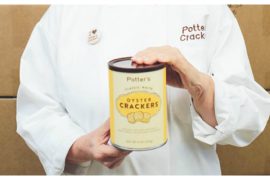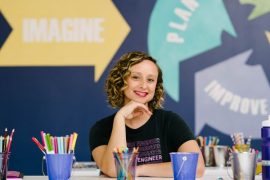Restorative Justice Programs: A Focus on Humanity
LAST YEAR VINDIA ROBINSON helped change the trajectory of a classmate’s life, and it wasn’t the first time.
After that classmate, a fellow Sennett Middle School student, stole his teacher’s iPod, Robinson conducted a problem-solving group to find a solution. The student faced harsh punishment that could have affected his schooling and ultimately his future. Robinson, 14, expertly navigated hurt and anger with the student, parent, teacher and others. She helped develop a fair and less punitive outcome, fostered community and elicited a sincere apology from the student.
Robinson is what YWCA Madison’s Nazka Serrano calls a “social justice warrior.” She’s a Circle Keeper through YWCA’s Restorative Justice program. “Vindia is one of many youths I look up to,” says Serrano, a restorative justice coordinator at the Y.
Restorative Justice solves problems by valuing community healing over punishment. “It brings back humanity and humility,” Serrano says. “We can focus on relationships and see each others as equals.” YWCA Madison uses it as an alternative discipline model to keep students in school and out of the criminal justice system, addressing racial disparities. It’s based on the “circle process” that stresses intentional conversation and relationship building.
Teachers at Sennett referred Robinson to the program in 6th grade because of her leadership skills. As her mom Kim Robinson notes, “Vindia makes things happen. She’s always had ambition.” She and fellow students learned the restorative justice process in a 10-week YWCA training program that taught such strategies as the “talking piece,” an item passed around the circle to allow for equal say and deep listening. The training is taught through a “very intentional racial justice lens,” says Serrano. “We talk about white privilege, the school-to-prison pipeline, being an ally. We look at the ‘Race to Equity’ report,” which, in 2013, uncovered serious racial disparities in Dane County and beyond.
Once student Circle Keepers graduate from the program, they facilitate circles for their peers, referred for infractions such as fighting, truancy, insubordination or peer conflict. If not for the circles, accused students may face harsher punishment, such as expulsion or suspension. Through the circles, the student who fought may instead be able to offer apologies and work on anger management skills, for example.
The Circle Keepers continue to form circle clubs focused on needs of a group, such as gender equity or immigration issues.
Robinson says Restorative Justice circles can be intense and difficult. “A lot of times I have mixed emotions. There have been serious circles where we just have to sit and be there for people. I don’t really know how to help. But then sometimes the circle is quick and easy,” she says. “Usually at the end of every circle I am feeling good because I think we made a difference. And I’ve made new friends. That’s why I keep going back.”
At their core, circles are about listening to each other’s stories.
“Stories can change so much of who we are and stories canchange so much of what we do,” says Serrano, whose own incredible story paved the way for her powerful work at the Y. Serrano was 7 years old when she came with her family to the U.S. from Ecuador. The family moved to a predominantly white neighborhood in Monona Grove. “Coming in as a brown girl was a huge culture shock,” Serrano says. “But it was a catalyst for what my work would be in the future.” Her courageous and barrier-breaking work has included getting a full scholarship to Edgewood College, volunteer roles at Centro Hispano and an impressive slate of activism and community organizing.
Serrano worked hard to build her community and shape her identity, so she knows the value of assisting schools and students in doing the same. “Through the restorative justice process, little by little, many youths deconstruct the idea that they are ‘bad kids’,” Serrano says. “Labels can really shape a child.”
The YWCA started its Restorative Justice program in 2010. In 2014, 233 school staff were trained in Restorative Justice. The program was held in 16 schools in six school districts. Teachers say test scores have increased. Data from the Y shows that 86 percent of students who participated in 2014 Restorative Justice referral circles showed attitude and behavioral improvements and 75 percent of participants felt more connected to their schools.
“I really think that this program helps our classmates. And it helps our school,” says Robinson of Sennett, which also has circle clubs and classroom circles. “Everybody is feeling more connected. We’re more like a family.” Robinson says the program has also changed her. “I got involved because I like to help people,” she says. “But now I know how to work through problems better and I know how to better connect with people.”
Robinson was a powerful force at Sennett, as evidenced by her peers’ loud cheers as she walked through graduation from 8th grade with honors and accolades this June. She says she’d love to continue to lead Circles at LaFollette High School, where she’ll start in the fall. When asked what she’d like to do in the future, Robinson rattles off possibilities such as social work, mediation or the law—all fields requiring the skills Robinson is fostering in herself and others through Restorative Justice.
Serrano adds “Young people, given the right tools and space, have the capacity to do so much. I’ve witnessed that. Youth are so powerful, and underutilized.”



